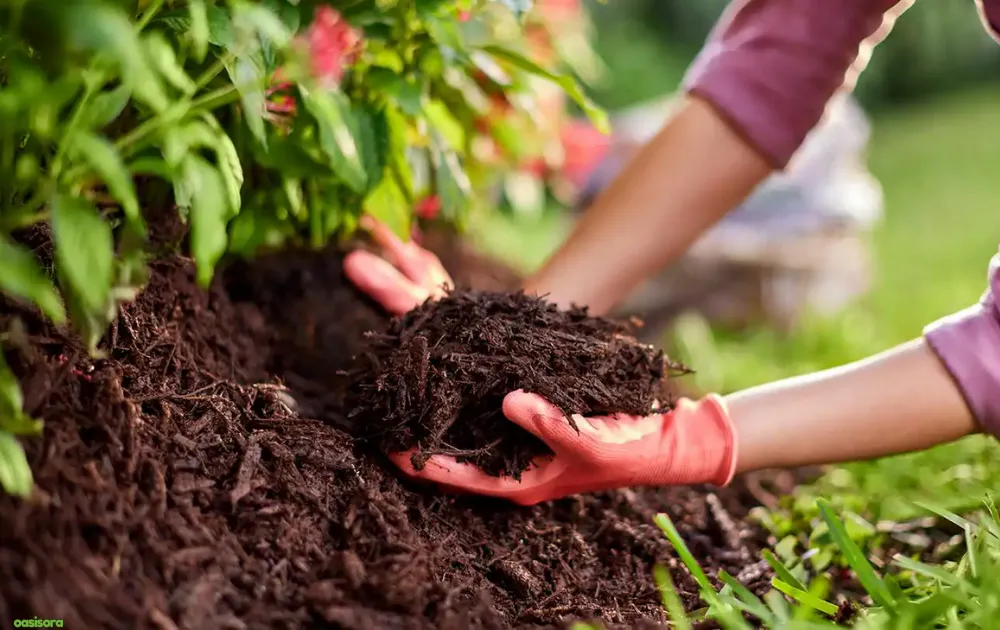
The best mulches for Florida landscapes are more than just a lovely way to cover your garden. You know, plant growth in Florida might be affected by high temperatures, sandy soil, and unpredictable rainstorms. I have seen personally how the proper mulch keeps the ground cooler and moist, and slows down the growth of weeds.
Moreover, it also gives the yard a neat and welcoming look. This article will list the best mulch options for Florida yards and explain how each may protect and improve your garden in different ways. Let’s get started.
Best Mulches for Florida Yards and Gardens
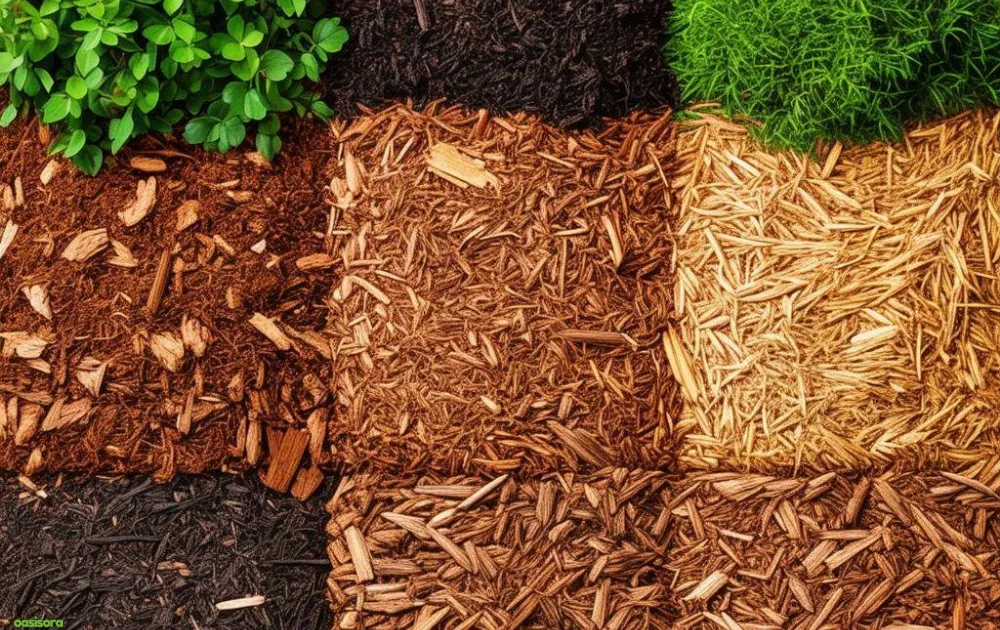
Types of Mulches for Florida Landscapes
The best mulches for Florida landscapes change with the size of your yard, the plants you grow, and your budget. Since Florida has sandy soil and heavy rain, you need mulch that stands up well. Every type has its own pros and cons. Only some work better in certain gardens. Let’s see the details for a better choice:
1. Pine Bark Mulch

Pine Bark Mulch for Florida Landscapes
Pine bark mulch is inexpensive and easy to purchase. It lasts longer than many other varieties since it decomposes slowly. You can select large nuggets that remain in place longer or tiny bits that blend into flower beds.
I noticed that pine bark mulch held up well in my yard even after summer storms. Also, it was effective for plants that prefer acid, such as blueberries and azaleas.
2. Cypress Mulch
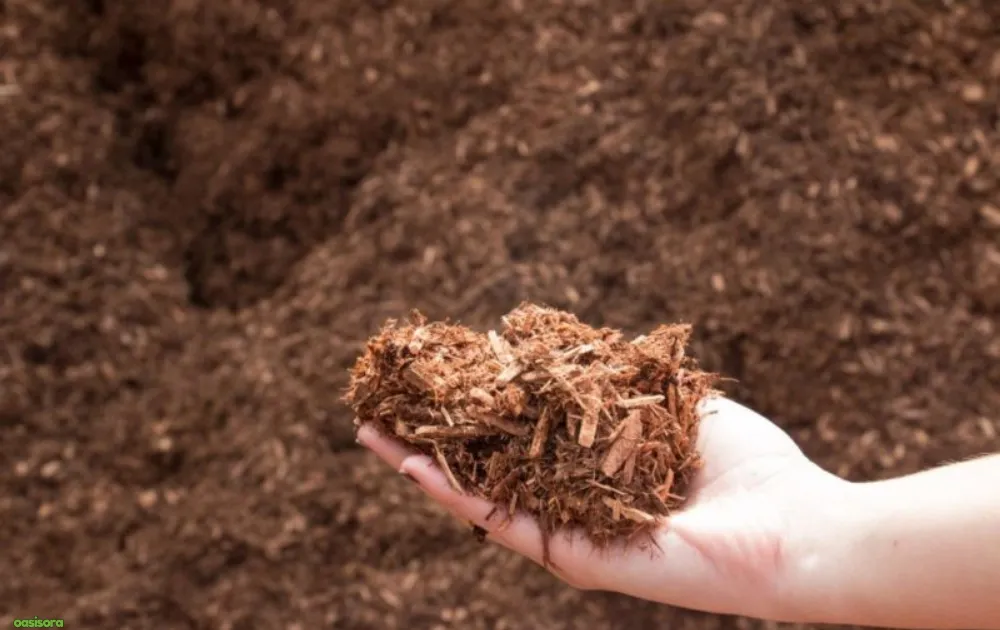
Cypress Mulch
Cypress mulch improves the appearance of garden beds with its mild reddish-brown color. It is durable, decomposes gradually, and forms a tricky texture to get rid of the mat. It is trusted by many homeowners as considered one of the best mulches for Florida landscapes, particularly for large flower beds or sloped regions.
However, the main concern is where it comes from. Some cypress mulch is usually cut from wetlands, which can harm the environment. To avoid that, look for brands that make it from leftover lumber waste.
3. Eucalyptus Mulch
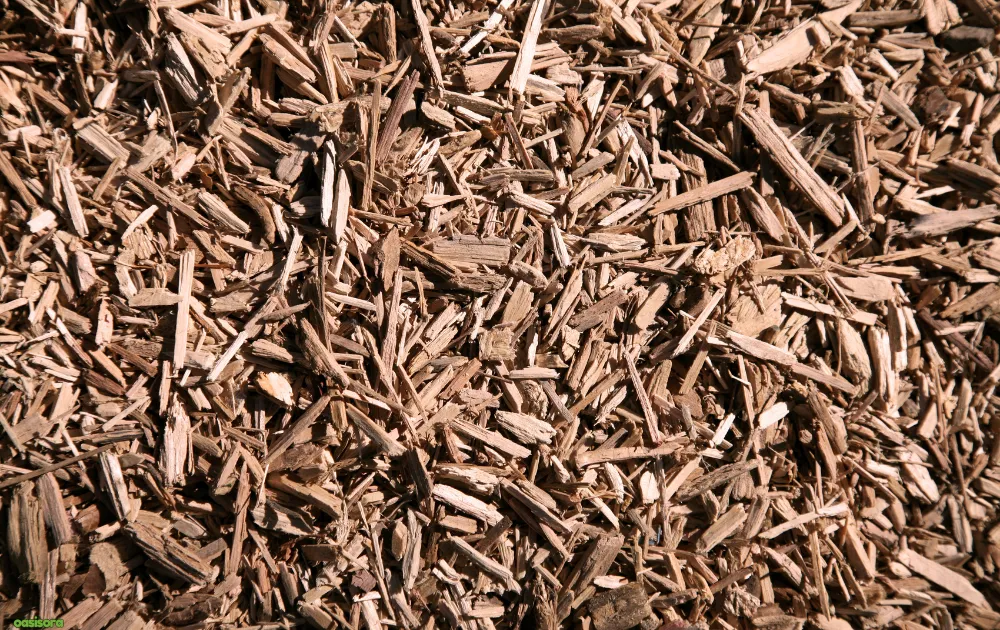
Eucalyptus Mulch
When it comes from rapidly growing trees, eucalyptus mulch is a renewable resource. In addition to having a fresh scent and a light tan color, it keeps fleas and ticks away. At the same time, it continuously breaks down, feeding the earth. Moreover, this mulch works well around shrubs and flowers. Its lighter color is nice for shady corners where you want to brighten the space.
4. Melaleuca Mulch (Flori Mulch)
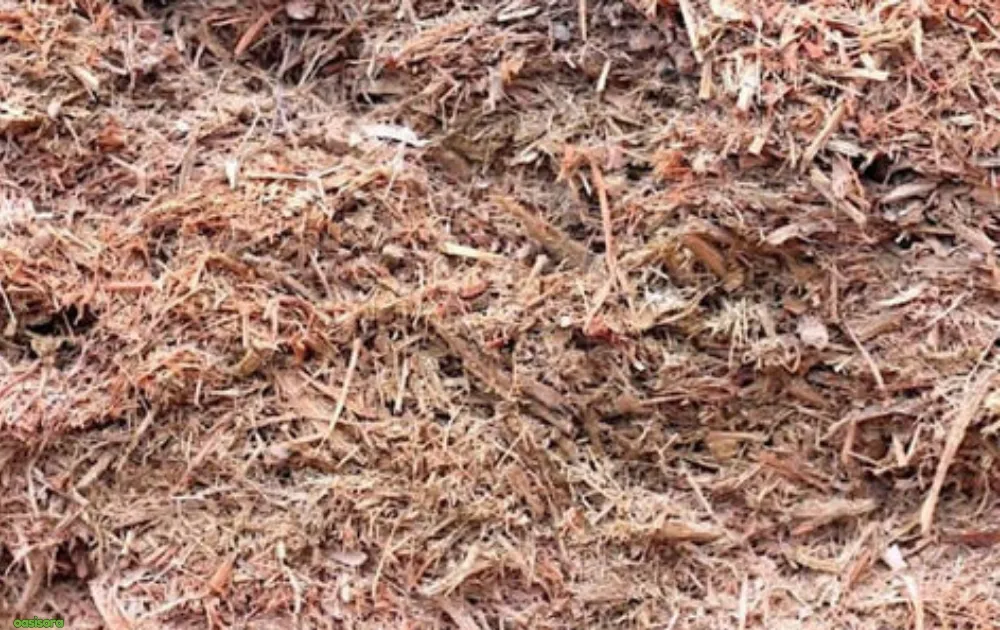
Flori Mulch
Melaleuca mulch, often sold as FloriMulch, is made from an invasive tree. Using it helps protect Florida’s environment. It is pale in color, neat in texture, and lasts longer than many other mulches.
In my garden trials, melaleuca mulch stayed firm even during heavy rains and needed no quick replacement. That saved both my time and cost compared to softer mulches. Also, it greatly helped keep ants and termites away.
5. Pine Straw

Pine Straw
Fallen pine needles are typically used to make pine straw. Together, the pine straws create a gentle woodland appearance that complements the yard nicely. Spreading this mulch over wide areas or slopes is simple because it is quite light in weight.
Interestingly, it is most effective on plants that prefer acid, such as blueberries and camellias. Because it allows water to flow through and keeps the soil cool, pine straw is acknowledged to be one of the best mulches for Florida landscapes by many people. However, its rapid breakdown necessitates a fresh layer once or twice a year, which is its only disadvantage.
6. Rubber Mulch
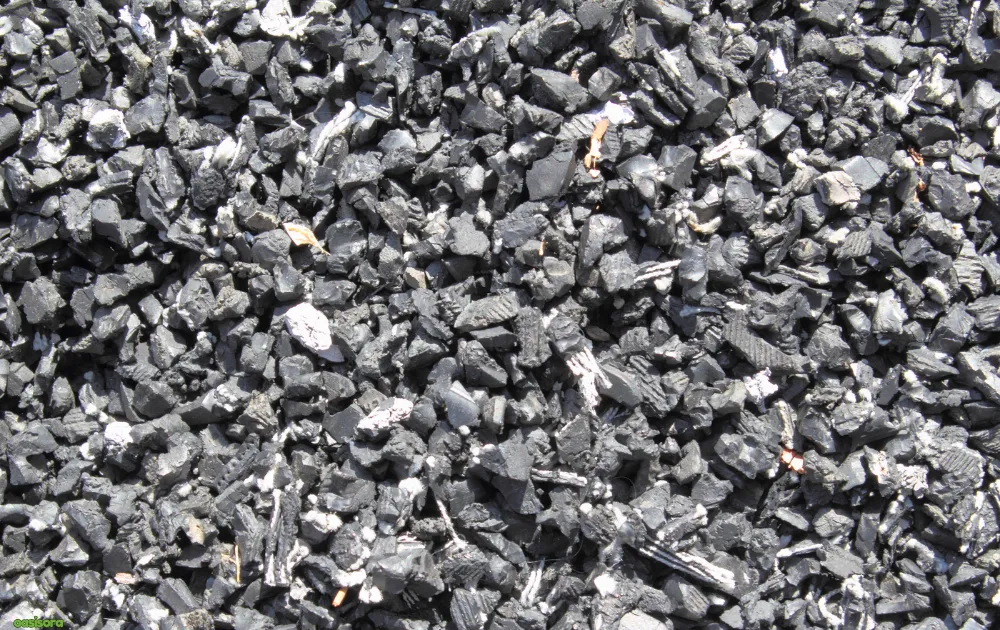
Rubber Mulch
Tire waste is used to make rubber mulch. It does not fade much in the Sun, is heavy, and remains in place. You don’t need to replace it very often because it doesn’t break down.
Typically, this mulch works best on playgrounds, pathways, and high-traffic areas. It doesn’t enrich the soil, thus it’s not a suitable choice for vegetable gardens.
7. Organic Mulch Blends

Organic Mulch Blends
Organic mulch blends are made from compost, leaves, and wood chips. They are often cheap or even free from local sites. They replenish Florida’s sandy soil with nutrients as they decompose.
Both flower gardens and veggie plots benefit greatly from these mixes. They retain water, control the growth of weeds, and gradually enhance soil quality. Although they may require frequent refreshing, the advantages to the soil justify the costs.
Comparison Table for Best Mulches for Florida Landscapes
| Type | Cost | Longevity | Appearance | Eco-Friendliness | Best Use |
| Pine Bark | Low | Medium | Dark brown | Moderate | Shrubs, acid-loving plants |
| Cypress | Medium | High | Reddish-tan | Low–Moderate | Slopes, general garden beds |
| Eucalyptus | Medium | Medium–High | Light tan | High | Shady beds, eco-friendly yards |
| Melaleuca | High | Very High | Light and neat | Very High | Long-term beds, borders |
| Pine Straw | Low | Low | Natural reddish | Moderate | Native gardens, slopes |
| Rubber | High | Very High | Colored options | Medium | Playgrounds, walkways |
| Organic Blends | Low | Medium | Mixed look | High | Vegetable gardens, soil improvement |
Why Mulching Is Essential in Florida Landscapes?
Florida gardens naturally face strong Sun, sudden rains, and dry sandy soil. For this reason, mulch is not just decoration — it is a real helper for the plants in those areas. Mulching helps keep the soil, plants, and garden beds healthy all year round.

Mulching to Florida gardens
Keeps the Soil Moist in Florida Heat
The summers in Florida are hot and long. UF/IFAS Gardening Solutions claims that mulch prevents water from escaping the ground too quickly by serving as a blanket. This makes pine straw and other choices some of the best mulches for Florida landscapes, since they hold water for longer and save you from watering again and again.
Shields Plant Roots from Extreme Temperatures
In Florida, the temperature can drop at night and rise to extremely high temperatures during the day. Mulch balances these changes. It protects roots from burning in the Sun and from stress during sudden cool nights.
Stops Weeds Before They Spread
In Florida, weeds grow quickly during the warm and rainy seasons. A heavy layer of mulch blocks the sunlight that weeds require to flourish. This helps you avoid picking weeds too frequently and maintains your garden beds tidy.
Makes Sandy Soil Rich and Strong
Florida soil is often sandy and weak. Over time, organic mulch breaks down and adds nutrients back into the ground. This helps the soil hold water better and supports stronger plant growth.
Protects Plants During Heavy Rains
When heavy rain falls, bare soil can wash away. Mulch slows down the water and protects the roots. I learned this when I used melaleuca mulch in my own yard — the soil stayed in place even after a stormy night.
When and How to Apply Mulch in Florida?

Mulch applying techniques for florida landscapes
Even the best mulch will not help much if it is not used the right way. The timing, depth, and placement all matter for good results in Florida yards.
1. Best Time of Year
Spring is the top time to apply mulch. It prepares the soil for summer heat and holds water when it is needed most. Fall is another good season as it protects roots before winter nights. That is why many gardeners count spring and fall as key times in using the best mulches for Florida landscapes.
2. Ideal Depth
The Florida-Friendly Landscaping™ Program suggests a mulch layer of 2 to 3 inches for most plants. Weeds can grow through thin mulch. Water may not get to the roots if it is excessively thick. A bit deeper, up to 4 inches, is coarse mulch, such as pine nuggets.
3. Where to Apply
Put mulch around vegetable areas, flowers, bushes, and trees. Keep it wide enough to cover the root area. This helps keep the soil cool and moist.
4. Areas to Avoid
Avoid putting mulch up against the base of tree stems or trunks. This “mulch volcano” can cause rot and bring pests. Always leave a small space around the plant base.
When I attempted to spread mulch without first pulling weeds, the weeds soon returned beneath the layer. I discovered later that it saves time and keeps the garden neat to clear the bed before applying mulch.
Common Mulching Mistakes to Avoid
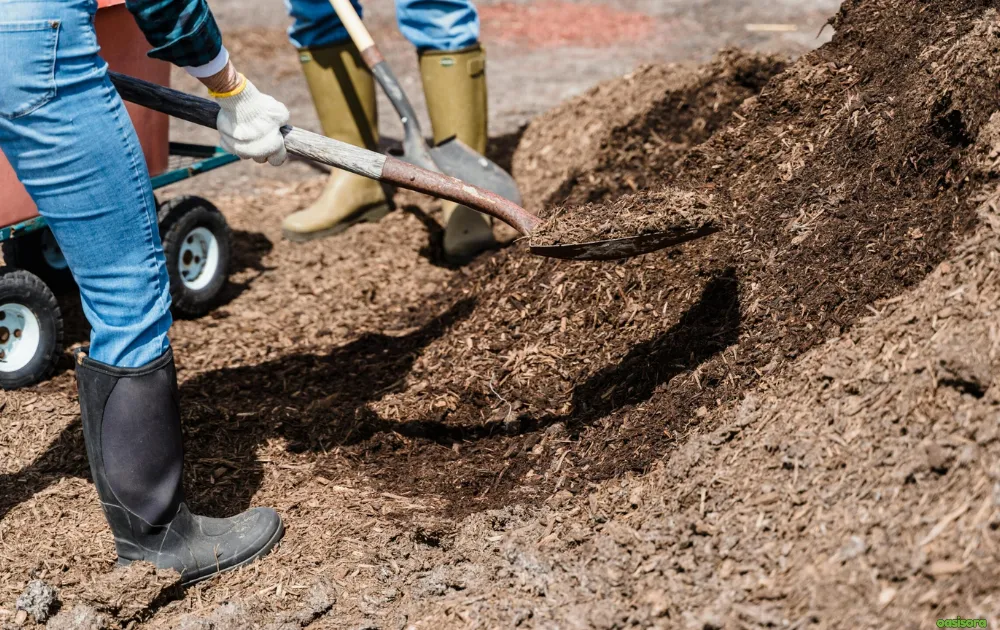
Mistake to avoid while Mulching
If applied incorrectly, even the best mulches for Florida landscapes won’t be helpful. Many Florida gardeners make a few frequent mistakes that do more harm than good to their plants.
Volcano Mulching Around Tree Bases
Piling mulch like a “volcano” around the bottom of a tree looks neat at first, but it is harmful. It holds water against the trunk, causing rot and making a space for pests. Always keep mulch a few inches away from the tree base.
Using Dyed Mulch That Fades Quickly
Bright red or black mulch may look good at first, but cheap dyed mulch often fades fast in the Florida Sun. Some are also made from recycled wood, which can be unsafe. Thus, it is better to choose natural or eco-friendly mulch.
Over-Mulching Causes Rot and Pests
Adding too much mulch may seem safe, but it blocks air and water from reaching the roots. This makes the soil wet and draws pests. Keep layers between 2–3 inches, or 4 inches if using coarse nuggets.
Choosing Non-Native Mulches That Harm Ecosystems
Not every mulch is safe for Florida’s environment. For example, cypress mulch often comes from wetlands. Picking it without care can damage natural areas. I noticed that gardeners who stick with pine bark, pine straw, or melaleuca usually get better results.
Given above were some of the best mulches for Florida landscapes. They protect plants while also being safe for the local environment.
Cost and Maintenance of Mulch in Florida
Some mulch costs less but breaks down fast. Others are costly but stay longer. Knowing this balance makes it easier to plan your Florida garden.
Average Costs Per Cubic Yard
Most organic mulches, such as pine bark or straw, cost $20–$40 per cubic yard. Special types like melaleuca or dyed mulch can be higher, around $50–$60. Buying in bulk usually costs less than bagged mulch.
How Often to Replace Mulch
Organic mulches usually need a fresh layer every 6–12 months because Florida’s heat and rain break them down fast. Inorganic choices like rubber can last for years. When I compared pine straw with melaleuca in my yard, I saw that the straw needed refreshing twice a year, but melaleuca held strong for several seasons.
DIY vs Professional Installation
Doing mulch yourself saves money, but it takes time and effort. Paying for a service costs extra, but they manage delivery, spreading, and the cleanup for you. For large yards, paying for help can be worth it.
Choosing Long-Lasting Value
Some of the best mulches for Florida landscapes are the ones that balance cost and durability. For example, Pine bark is cheap and steady. Melaleuca costs more but lasts longer and needs less care. Your choice depends on money or less work.
Final Thoughts
Florida’s lengthy summers, sandy soil, and frequent rains all make gardening there challenging. Your style, budget, and plants determine the best mulches for Florida landscapes. Because they stay longer, melaleuca and pine bark are excellent options. Some require quicker refreshing, such as pine straw, but they provide a softer, more organic appearance.
I found that no mulch is perfect for everyone. The important things are whether you want to save money, save time, or create a unique garden design. Whichever mulch you choose, it will improve the quality of your soil, prevent weed growth, and protect your plants from Florida’s harsh climate.
Undoubtedly, the right mulch can turn a hard yard into a thriving, low-maintenance garden.
FAQs
What mulch lasts the longest in Florida?
Melaleuca and rubber mulch can last for years without quick replacement.
What mulch helps keep away bugs?
Cypress and melaleuca have natural oils that push back ants, termites, and other pests.
Is rubber mulch safe for Florida gardens?
Yes, it is safe for walkways and play areas, but it does not improve the soil for plants.
How often should mulch be replaced in Florida?
Most organic mulches need refreshing every 6–12 months, while rubber or melaleuca lasts much longer.
Which mulch is best for Florida vegetable gardens?
Organic blends like compost, leaves, or pine bark are the best fit for vegetable beds. They feed the soil and help sandy ground hold water.
